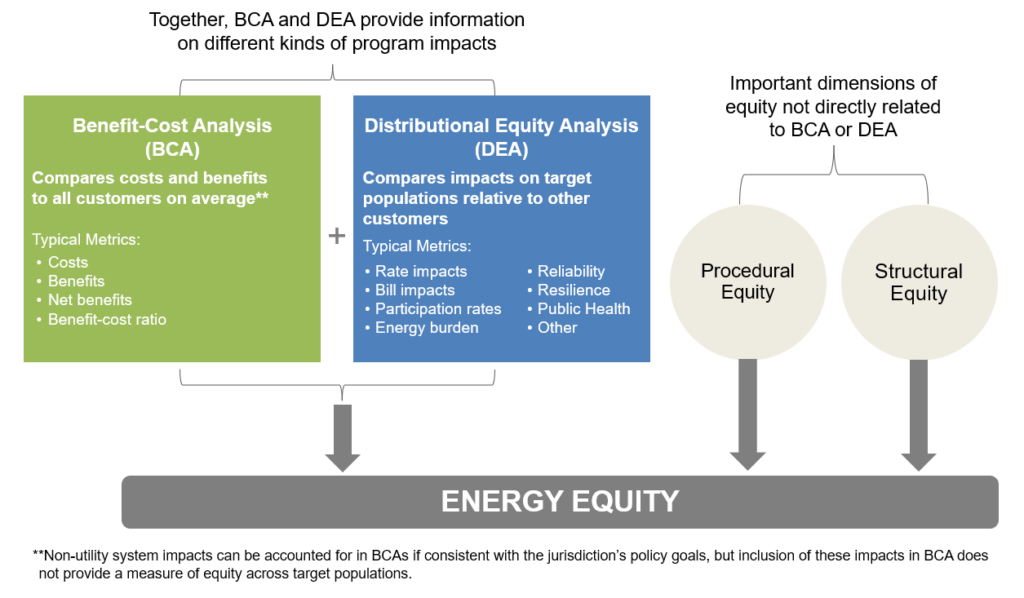Energy Equity and BCA
As jurisdictions increasingly center energy equity as an overarching goal in a transition to a cleaner energy industry, many are creating goals that address distributional, procedural, and structural equity in all aspects of their distributed energy resource (DER) investments and other strategies. This requires affirming equity in decision-making tools and understanding the extent to which BCAs (benefit-cost analyses) address equity.
BCAs do not address procedural or structural equity, nor are they designed to fully account for distributional equity.* In accordance with NSPM Principle 8, BCAs do not address rate, bill, and participation impacts (key aspects of distributional equity).
As jurisdictions are grappling with this limitation, NESP developed a conceptual framework that shows the relationship of BCAs to distributional equity analyses (DEAs), and the importance of conducting both analyses to fully assess equity in DER investment decisions. This framework is explained in Chapter 9 of the MTR handbook and also in an ACEEE 2022 Summer Study paper and presentation.
Distributional Equity Analysis Guidance Project
With this framework, E4TheFuture, in partnership with Lawrence Berkeley National Laboratory (LBNL), has launched a project to develop guidance for conducting Distributional Equity Analysis (DEA). Jointly funded by US DOE and E4TheFuture, this project will build on the MTR Handbook conceptual DEA framework. It will involve research on the current state of equity metrics and measurement in DER valuation, development of a how-to guide for stakeholders to conduct DEA, and an example case study that applies the DEA framework. This work will build on related national energy equity efforts, such as the Energy Equity Project and others. The project is being guided by an advisory committee with a broad representation of stakeholders. The guidance is due to be published in March 2024.

Visit our events page for upcoming presentations and other energy equity materials. For questions about our conceptual framework, or to collaborate on our DEA framework, contact NSPM@nationalenergyscreeningproject.org.
Other national efforts on energy equity include:
- American Council for an Energy Efficient Economy (ACEEE)
- Energy Equity Project (EEP)
- Illume Advising
- Lawrence Berkeley National Laboratory
- New York University Institute for Policy Integrity (NYU IPI)
- Pacific Northwest National Laboratory (PNNL)
- Regulatory Assistance Project (RAP)
- VEIC
*One exception is with regard to intergenerational equity. The concept of fairness among current and future customers regarding the costs and benefits of energy resources is typically addressed by jurisdictions through the discount rate applied to the monetized costs and benefits of a DER. Discount rates reflect a particular “time preference” of the jurisdiction performing the BCA. A high discount rate gives more weight to short-term benefits and costs. A low discount rate more equally weighs short- and long-term impacts.

